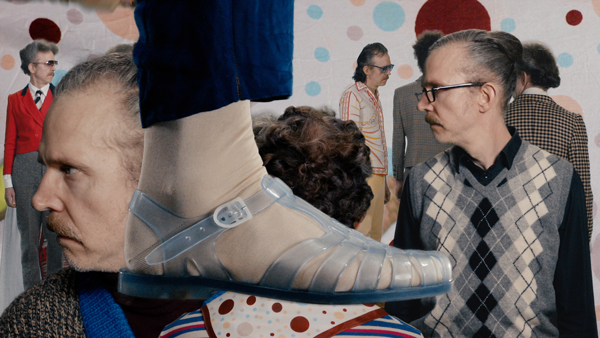Hauser & Wirth have galleries in Zurich, London, New York and now Los Angeles, but in rural Somerset, England, Iwan and Manuela Wirth have created a mini-Eden in which they bring all their interests together: art and architecture, conservation and food, community and family. They’ve already had some notable exhibitions by the likes of Phyllida Barlow and Jenny Holzer. A love affair rather than a purely commercial venture, Durslade Farm in Bruton, Somerset, restored by Argentinean-born architect Luis Laplace, has had over 130,000 visitors from July 2014 to July 2015. Durslade Farm may yet turn out to be to the west of England what the Guggenheim is to Bilbao.
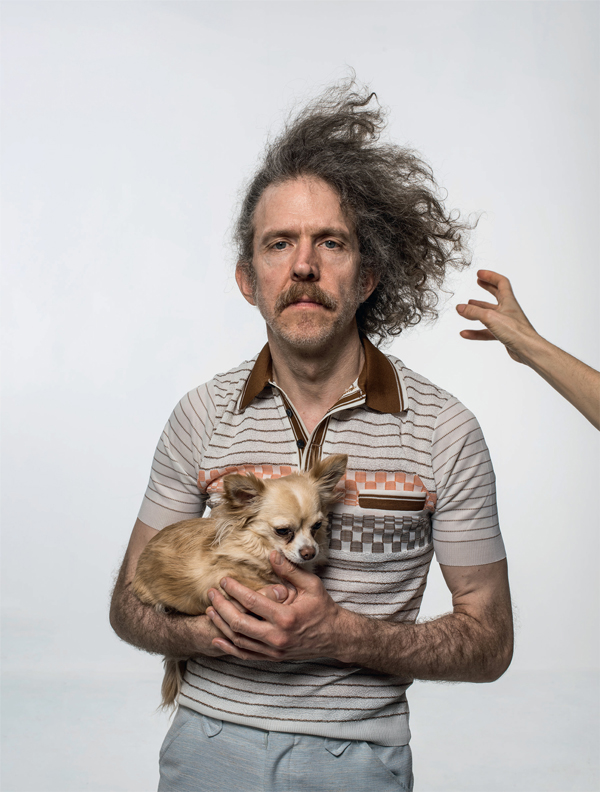
Martin Creed, Work No. 2661, 2016, © Martin Creed. Courtesy the artist and Hauser & Wirth, Photo: Hugo Glendinning
It’s a bucolic scene among the green fields, hedgerows and lovingly renovated stone barns. Invited guests gather in a marquee to listen to Martin Creed’s band promote his new album, Thoughts Lined Up, as rain lashes down in a cliché of an English summer. The great and the good of the London art world have decamped to the country for the day and are bringing a touch of razzamatazz to rural England for the opening of his new show. With his man-bun and ’70s gaucho moustache, Creed has a lugubrious air: a cross between an encyclopedia salesman and a small-town American preacher. In the video for his new single, “Understanding,” he dresses in various retro getups: a garish Hawaiian beach shirt, a patterned geometric jersey, and a woman’s skirt and jacket, all worn with his afro-frizz arranged in a variety of styles from pigtails and braids to chignons. It’s funny, doleful, silly and quirky, like observing an adult child playing at dressing up and dancing around without realizing he’s being watched.
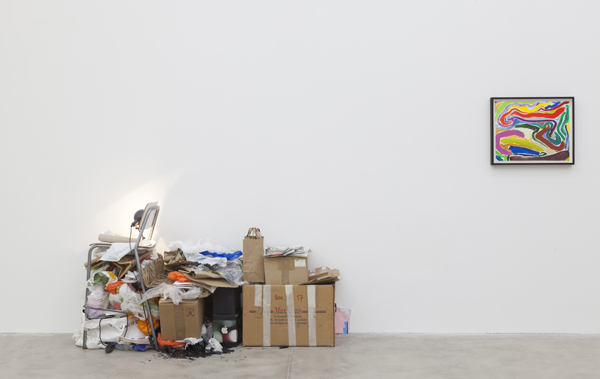
Installation view, “Martin Creed: What You Find,” Hauser & Wirth Somerset, 2016, © Martin Creed, courtesy the artist and Hauser & Wirth, photo by Jamie Woodley; Opposite: Martin Creed, Work No. 2661, 2016, © Martin Creed, courtesy the artist and Hauser & Wirth, photo by Hugo Glendinning
For Creed there’s no real distinction between his art and his music or, indeed, between life and art. An heir to Duchamp, his work relies on context and the viewer’s desire to engage. He’s concerned with minute interventions rather than large gestures. Either you get them or you don’t. Since 1987 he’s numbered each piece, such as Work No. 79: some Blu-tack kneaded, rolled into a ball and depressed against a wall, or Work No. 88, a sheet of A4 paper crumpled into a ball. In 2001 he registered in the public consciousness with his Turner Prize–winning Work No. 227: The lights going on and off. This consisted of lights being switched on and off at 5-second intervals in an empty room. Whether you thought it poetic or absurd depended largely on your frame of reference. Many questioned whether something so minimalist could be considered art at all.
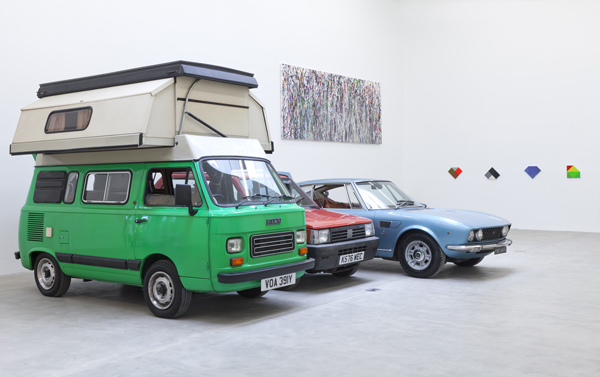
Work No. 2693, 2016
Fiat camper van, Fiat Dino, Fiat Panda, acrylic on canvas
Only recently back from New York where he was installing a huge rotating red neon sculpture, commissioned specifically for Brooklyn Bridge Park’s Pier 6, Creed was making much of the work for the Somerset exhibition until the 11th hour. Even at the private view there’s still no press release, and many of the works remain unnamed. In the first gallery is a neon sign that simply reads CHEESE. Creed, apparently, has a phobia about the stuff. Elsewhere there are piles of detritus—bits of plastic and cardboard—and the windows of one gallery are covered in drippy paint à la Jackson Pollock. There are sculptures “constructed” from cardboard boxes and “minimalist paintings” made from striped cloth, which hang alongside actual— surprisingly good—geometric paintings. And there are some “naïve” figurative paintings, including a portrait of Antonio Banderas, taken from a second-hand description of a photograph, rather than from the photograph itself. As Creed says: “I feel like I’m then free of comparing my work to the reality.” There’s also an array of sound pieces and a collection of old Fiat cars, plus a green camper van. Outside in the courtyard a tree flaps with plastic bags. There are, also, two rather serious videos: one about borders and the other about refugees and, in a showcase, a solitary wig or pile of hair.
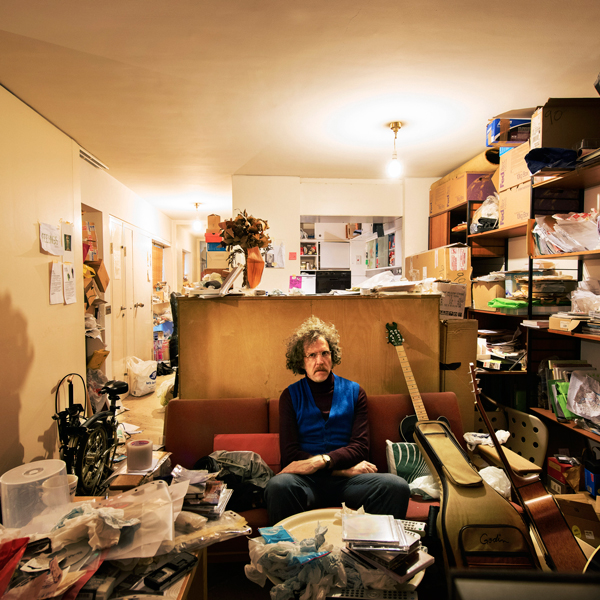
Martin Creed, Work No. 2683, 2016, Courtesy the artist and Hauser & Wirth, Photo: Hugo Glendinning
For the last year Creed has been making garments from long pieces of cloth. These have lots of buttons and are displayed on tailors’ dummies. He wanted, he says “to make clothes because I wear clothes and clothes are good examples of something which you have to live with, and I don’t think these paintings are. To me paintings and sculptures are basically the same as clothes, you know. You have to live with them and hopefully they can help you a little bit, cover you up.” What you make of these gnomic utterances is largely up to you. It’s easy for the “call-that-art?” brigade to dismiss Creed. He may not be Rembrandt but his work is playful and full of dismissive wit with which he flags up the invisible structures that underpin and shape our lives.
“Martin Creed: What You Find,” at Hauser & Wirth, Bruton, Somerset, through September 11, 2016.

